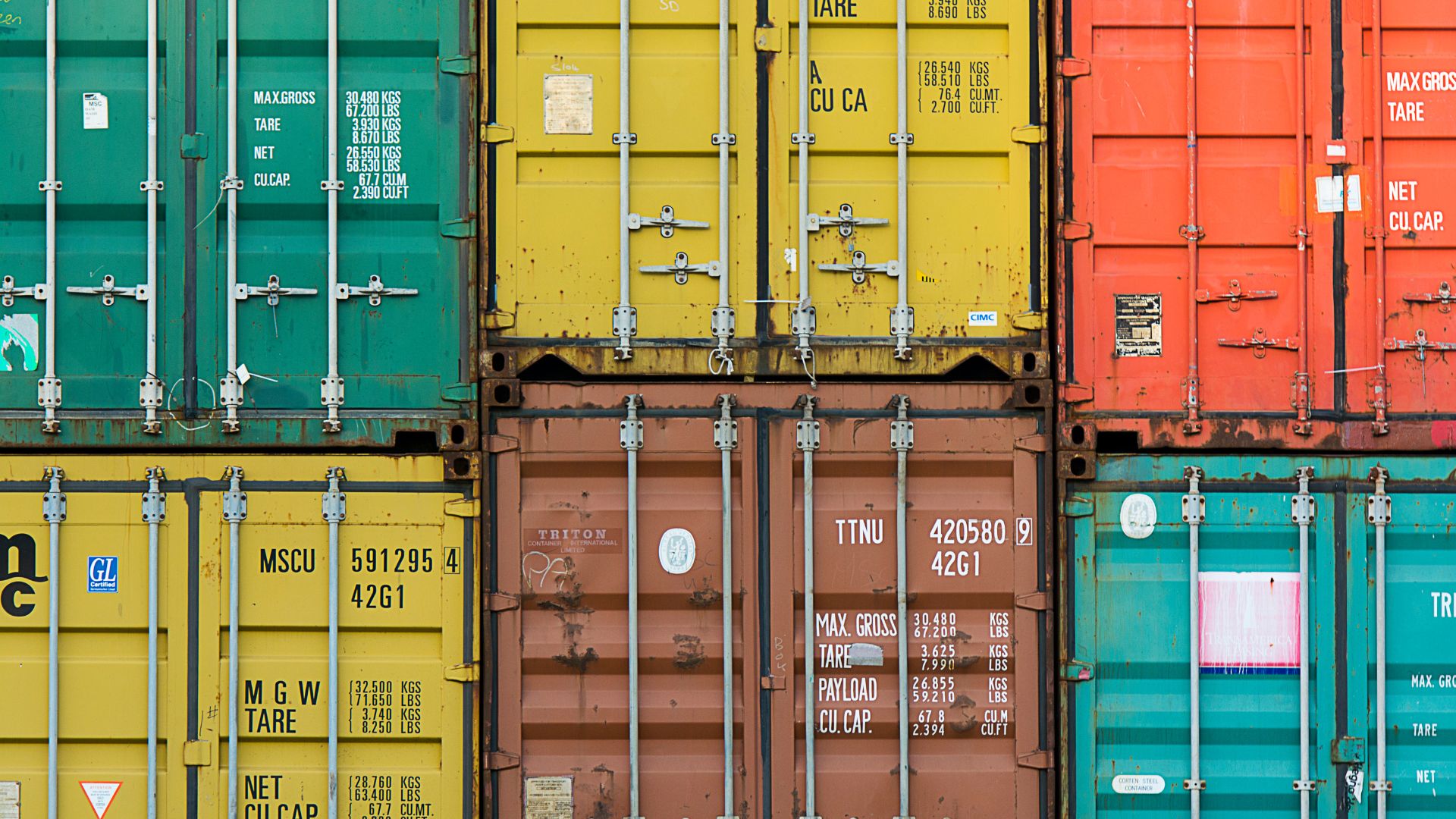This week:
- Shippers warn that just one day of ILA strike would be “too long,” have disastrous impact
- Trade groups reach out to the White House again for help in ILA-USMX contract talks
- US East and Gulf Coast ports expand operations ahead of potential strike start date
- Railroads can take on cargo from strike disruptions, but air cargo is booked in peak season
- LA-LB stakeholders speak out against proposed Port ISR emission rules
- Warehousing contributes to success of busy year at LA-LB ports
- Fed cuts rate by half a percentage point, but new manufacturing unlikely until 2025
Shipping Lines Warn One Day of ILA Strike Would Be “Too Long”
With a threatened strike at US East and Gulf Coast ports potentially just days away, supply chain stakeholders are busy making preparations and speaking out.
The labor dispute between the International Longshoremen’s Association (ILA) and employers represented by the United States Maritime Alliance (USMX) has two major sticking points. First is a disagreement over the use of automation, and the second is the ILA’s wage demands.
The current contract at East and Gulf Coast ports expires September 30, making October 1 the potential strike start date. Industry observers are in near-unanimous agreement that a strike of any length would have a disastrous impact on global supply chains and the economy at large.
In recent days, USMX member companies have made their position known via letters and media briefings. George Goldman, president and CEO of the North America division at CMA CGM, spoke at one such briefing held September 18 at the Port of Los Angeles, warning of dire consequences if a deal isn’t reached in time.
“One day is too long of a shutdown,” Goldman said. “The reality is that we’re in a fluid supply chain process. The moment you close the door, things begin to back up…we are not, in any way, looking forward to having any shutdown on any coast,”
Subscribe to JMR’s Weekly Supply Chain Roundup!
Stay informed with the latest supply chain news, trends, and insights. Get it delivered directly to your inbox every week.
Trade Groups Again Reach Out to the White House
Business leaders are equally concerned about the impact of a work stoppage. On September 17, 177 trade associations sent a letter to President Joe Biden urging the White House to help “negotiate a new deal or agree to continue negotiations while keeping the ports open and cargo flowing.”
The same group of trade leaders sent a similar letter to the White House on June 28. However, this time the trade groups were joined by Republicans from the US House of Representatives. In a separate letter, the House Republicans warned of “dire impacts” to the American economy if the ILA does strike.
Although the Railway Labor Act of 1926 gives Congress the right to intervene in labor disputes to avoid severe threats to the economy, it seems unlikely the White House will take action. Vice President Kamala Harris is in a tight presidential race, and Democrats have campaigned on a strong pro-union stance, making it unlikely the White House would force the ILA back to work.
Some Ports Extend Operating Hours, Add Weekend Work Ahead of Strike Date
Some of the East and Gulf Coast ports that would be affected by the ILA strike recently announced contingency plans to process more shipments ahead of October 1. This includes extended hours and adding weekend operations at several locations, including Garden City Terminal in Savannah, the Port of Houston, and the Port of Virginia.
The operational changes come as ocean carriers implement surcharges on cargo headed toward potentially impacted ports.
Railroads Prepared to Help With Strike Disruptions, Air Freight Booked in Midst of Peak Season
With the potential ILA strike looming, industry focus turns toward finding trade alternatives. US railroads are said to be well-prepared to help with strike disruptions, while months of high volume and the current peak season mean the air freight sector is mostly booked already.
At a recent Morgan Stanley conference, the CEOs of rail companies CSX Transportation and Norfolk Southern Railway said they could manage extra cargo stemming from strike disruptions. However, air cargo has little to no room to help out.
Eight straight months of double-digit growth in air freight volumes (due to strong eCommerce volumes from China) mean it’s unlikely much freighter cargo could shift to airliners. The air freight peak season has only tightened capacity further.
LA-LB Port Stakeholders Speak Out Against Proposed Emissions Rules
On September 17, stakeholders at the ports of Los Angeles-Long Beach released a letter urging the mayors of both cities to lead the effort against the proposed emissions rules known collectively as the Port Independent Source Rule (ISR).
The letter, addressed to Los Angeles Mayor Karen Bass and Long Beach Mayor Rex Richardson, was signed by shippers, the International Longshore and Warehouse Union (ILWU), and around 200 other transportation interests. The collective said in the letter that Port ISR’s approach to a zero-emission supply chain would lead to a drop in cargo volumes. The LA-LB port complex is the largest in the United States.
“Without necessary infrastructure, the proposed Port ISR would result in a cap on cargo volumes and ultimately punish ports, marine terminal operators, and supply chain workers who have already worked hard to reduce diesel pollution by 90%,” the letter said.
Record Import Volumes, Few Disruptions at LA-LB This Peak Season
Despite record import volumes, stakeholders have noted minimal supply chain disruptions at the LA-LB ports this peak season. Industry analysts say this is due to solid warehouse operations throughout Southern California.
Scott Weiss, vice president of technical sales-warehouse and distribution services for North America at A.P. Moller Maersk, told the Journal of Commerce last week that the steady volume of imports this year enabled warehouse operators to maintain peak staffing and equipment performance levels.
“There used to be much more seasonality to imports. Now, it’s more spread out. Warehouses like when it’s spread out,” Weiss said.
Fed Rate Cut Unlikely to Spur Manufacturing Until Next Year
Manufacturers praised the US Federal Reserve’s rate cut of half a percentage point last week. However, industry experts don’t expect the cut in interest rates to spur new manufacturing activity until 2025.
High interest rates and uncertainty about when the first cut in years would arrive have plagued manufacturers throughout 2024, leading to low production levels and rising inventory. According to reporting from Supply Chain Dive, observers had hoped for growth in the second half of this year, but they now see uncertainty about the upcoming presidential election, which will likely keep manufacturers cautious until 2025.
However, industry analysts expect the rate cut to trigger capital spending. This will likely result in manufacturers investing in information technology or new factory equipment.
Fed Rate Cut Unlikely to Spur Manufacturing Until Next Year
Manufacturers praised the US Federal Reserve’s rate cut of half a percentage point last week. However, industry experts don’t expect the cut in interest rates to spur new manufacturing activity until 2025.
High interest rates and uncertainty about when the first cut in years would arrive have plagued manufacturers throughout 2024, leading to low production levels and rising inventory. According to reporting from Supply Chain Dive, observers had hoped for growth in the second half of this year, but they now see uncertainty about the upcoming presidential election, which will likely keep manufacturers cautious until 2025.
However, industry analysts expect the rate cut to trigger capital spending. This will likely result in manufacturers investing in information technology or new factory equipment.






